My third project for Art in Practice explored 3D portraiture through clay sculpture. I began my first experiment by wrapping chicken wire over a wooden armature as a base for my sculpture before creating the piece with only my hands, a wooden knife and a pencil for carving and engraving details. Inspired by the portraits produced my the ancient Greek and Romans, I took a traditional approach to my sculpture in relation to proportion and likeness.
However, where these ancient sculptures depicted religious and mythical personalities, my sculpture is based off of photographs of my dad, thus exploring the relationship between parent and child through careful observation and mark making. Furthermore, I maintained the textures from my fingers and used my pencil to produce rough marks for the hair rather than smoothing them out to create a handmade, more gestural outcome.

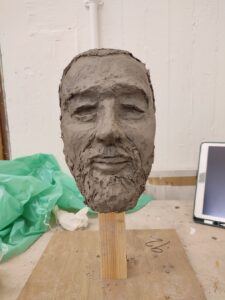

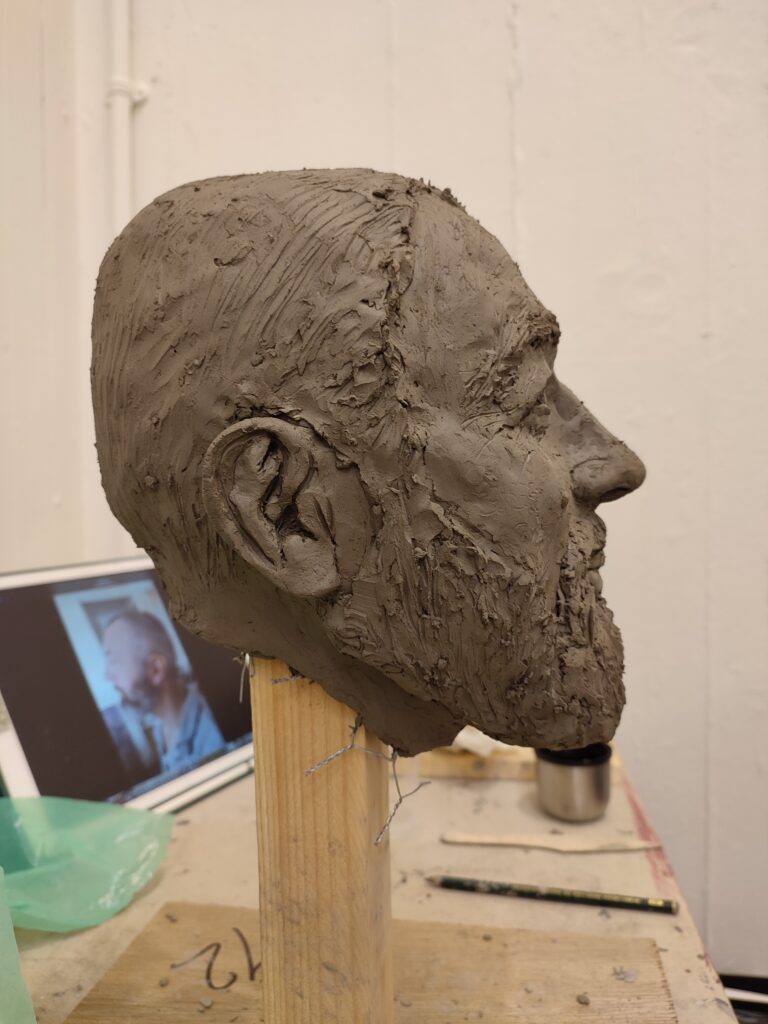

Following my first portrait, I decided to take a more non-conventional approach to clay sculpture; I decided to create clay ‘tiles’ conveying exaggerated facial expressions using the same materials. This decision was influenced by the sun sculptures featured in the Blackpool Illuminations, which I would often pass by at home.
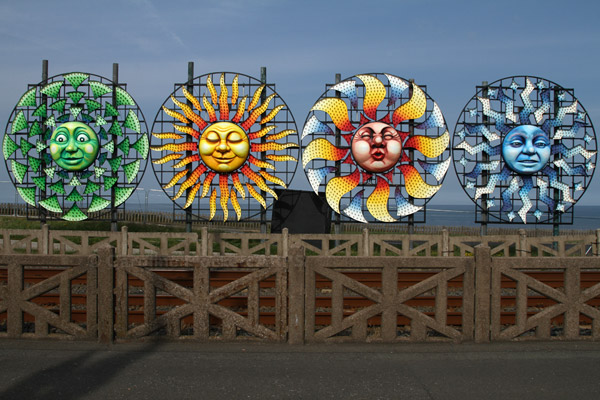
My work was also inspired by the work of contemporary artists such as Jack Cheetham (Glasgow) and Jonathan Baldock’s 2019 series ‘Personae’. Cheetham’s sculptures depict warped-looking faces which appear to anthropomorphize the objects they emerge from, resulting in a sense of movement and animation. Comparatively, Baldock’s collection of simultaneously figurative and abstract ceramic tiles explore ideas around masks in relation to history, culture, identity and ideology. Differing facial expressions are combined to create surreal, ambivalent expressions that can be both depressed and playful, exploring ideas around faces in relation to modern technology (such as emojis and facial recognition).
In addition to the physical forms, I also like how these artists exhibit their work in a simple, white space in order to make audiences confront the work without distraction, so I will similarly exhibit my own tiles against white walls with sufficient space between them, thus forcing you to look closely at them.

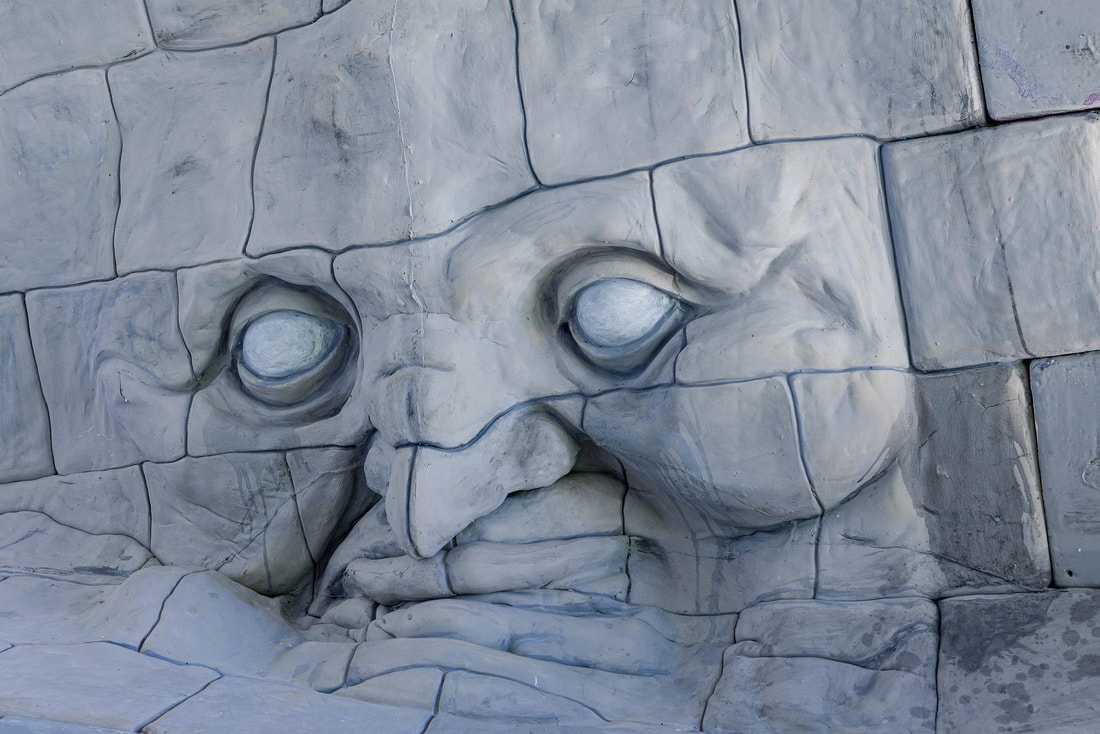
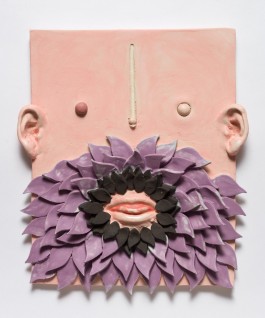
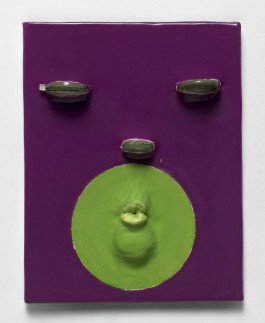
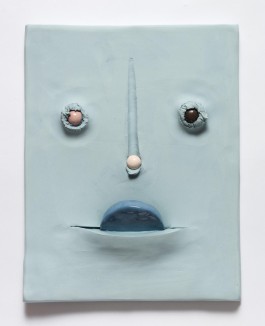

Jonathan Baldock
My clay tiles:




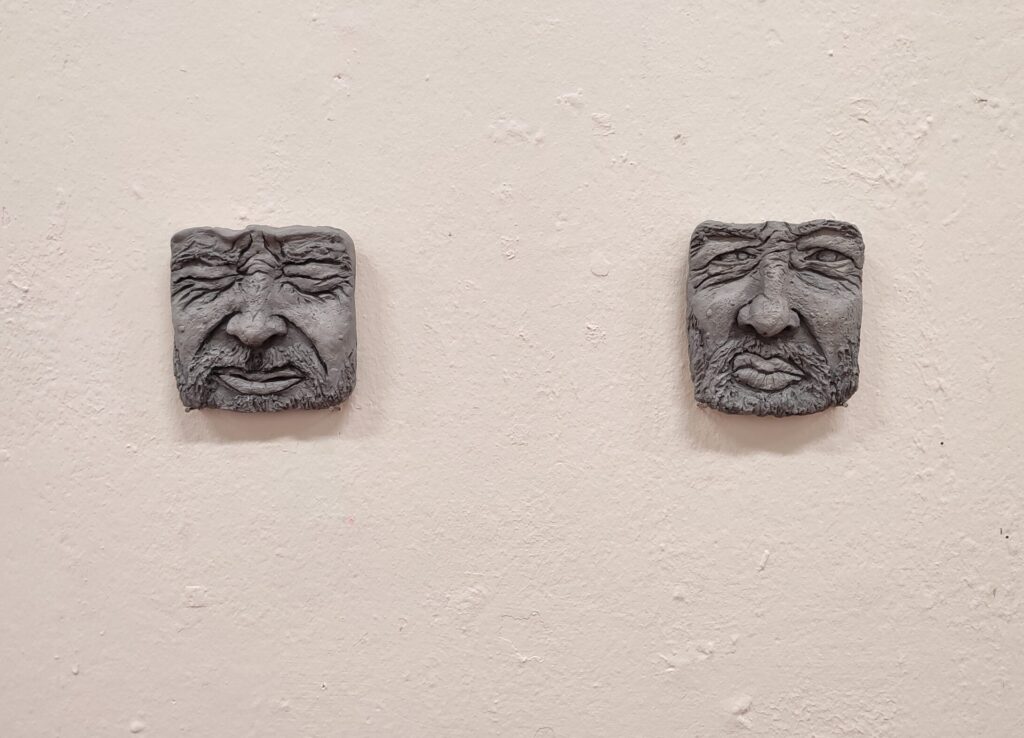
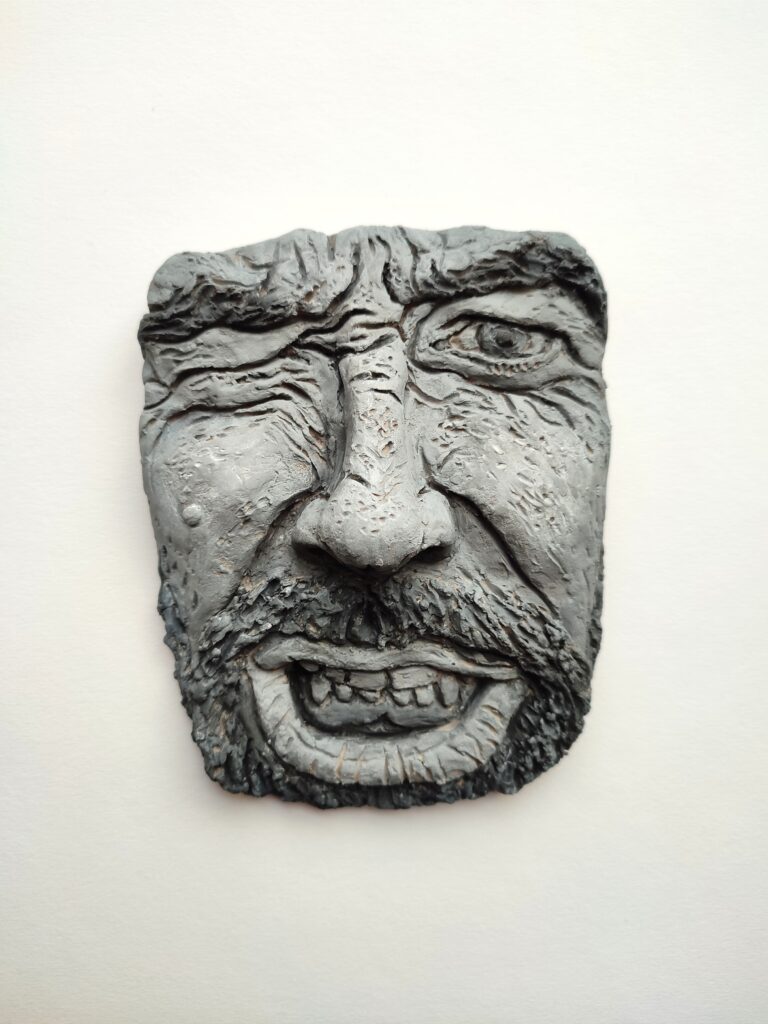
I found the composition and small scale (approximately 12cm squared) to be particularly effective in emphasizing these expressions, resulting a scrunched, wrinkled effect as though the face is being compressed. I also really enjoy the humor aspect of the tiles due to their strange appearance. To prevent cracking, I fired my tiles in the kiln and then painted them gray again as I disliked the yellow colour they turned to. I chose the specific grey after swatching various neutral tones on the back of the tile, as I found this gave them the most depth and added to the more contemporary feel I wanted to achieve. I also enjoy the progression of my skills in each tile as there is a clear improvement in the anatomy/proportions and detail of my third work.
Making a plaster cast:
To preserve my clay head (which would crack and break while air drying and cannot be fired in a kiln due to its solid structure), I learned how to make a plaster cast with Andrew’s help and expertise. We began by painting a layer of red silicone, a second layer with thickener added and finally a third layer of green, fast-setting silicone. I then made a clay wall to separate each side before adding the liquid plaster to the sculpture. When the first side dried, the wall was removed, clay slip was applied and the other side was plastered. Next, I scraped away the plaster along the middle to reveal the clay line and a chisel was used to open up the mold, which was then cleaned to remove any clay. The mold was put back in the plaster, locked into place with the ‘keys’ and a strap before being filled with plaster.
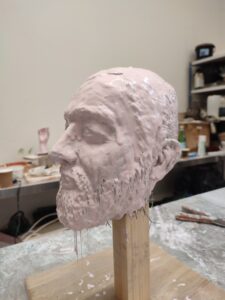

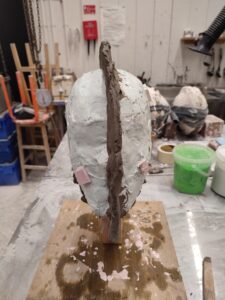
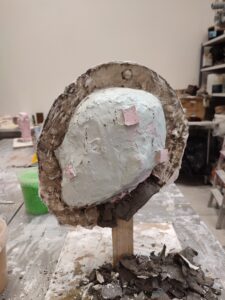

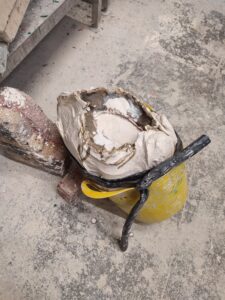




I am pleased with the outcome of my first cast, particularly due to the amount of detail achieved, although I had to paint on some thick plaster in minor holes around the nose and earlobes. I made a second cast as some of the residue clay had come onto the surface and I wanted to try using an armature to display it.
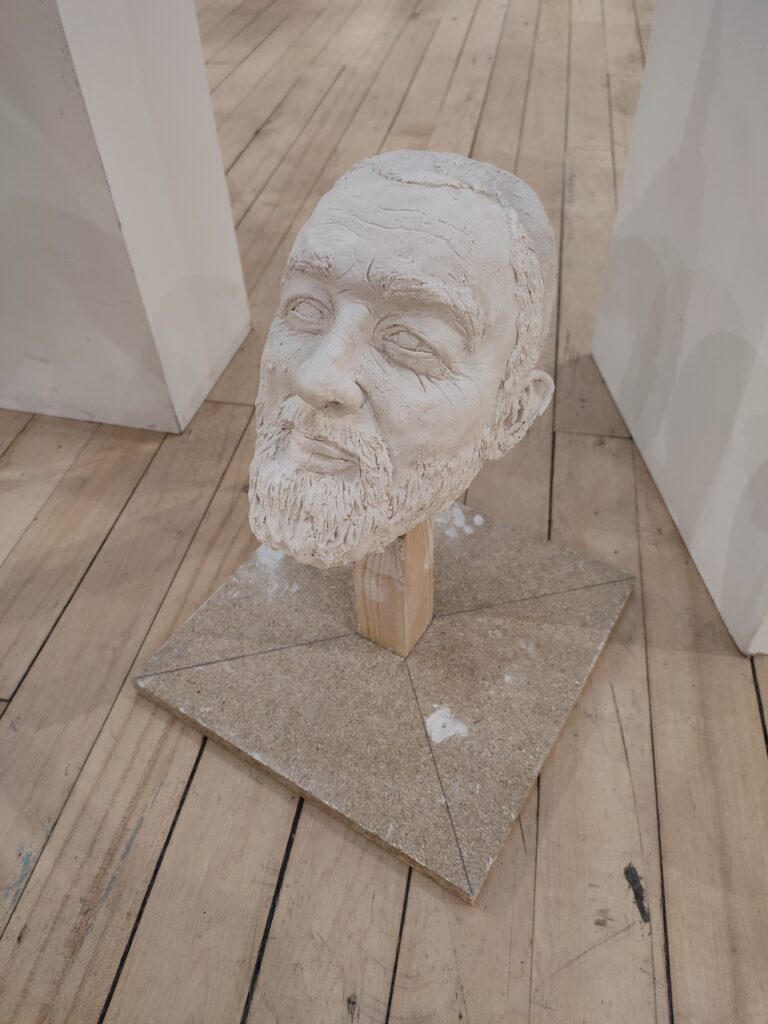
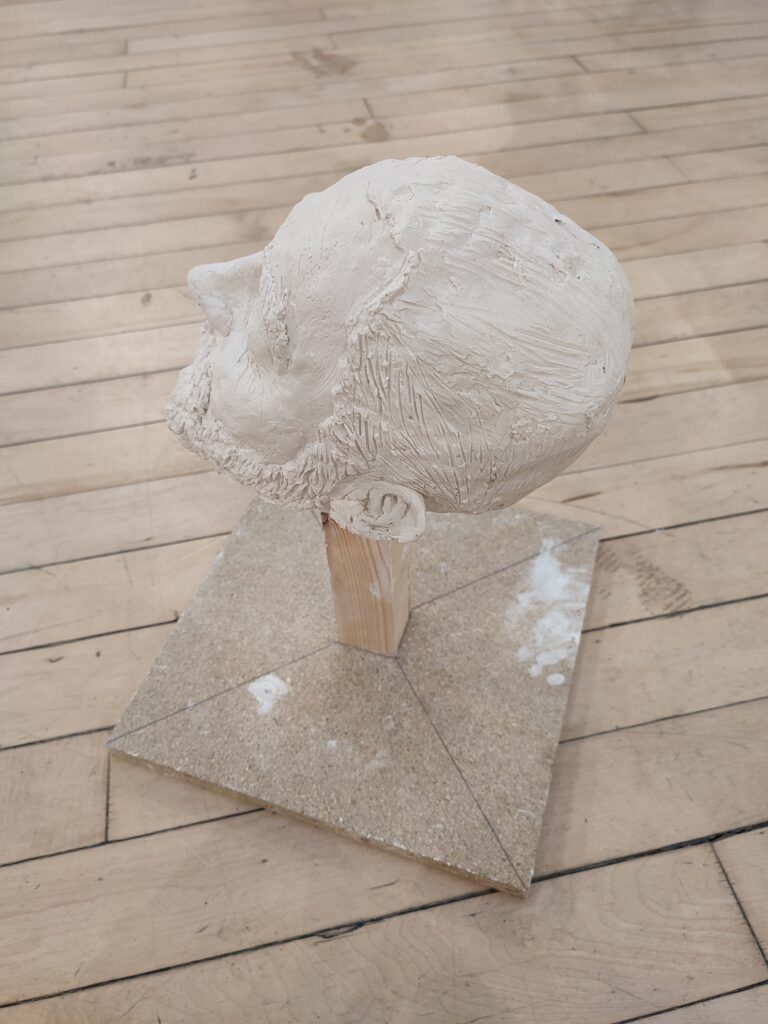
To make the armature I used scrap materials from the wood workshop, which was inserted into the plaster mold upside down (using stools and clamps to position) as the liquid plaster dried. I decided not to paint the armature or remove the markings to reflect my subject and concept better, as the sculpture is a portrait of a working class tradesman. As a result, this imperfect rendition contrasts with the classical sculptures of the upper class and mythological characters.
Overall I am very pleased with the progression of my project, as I was able to learn a variety of new skills in sculpture. I think my clay tiles were especially successful artworks so I will be continuing to expand my series of little faces outside of my Art In Practice course.
JACK CHEETHAM. (jcheetham.com)
Jonathan Baldock — Personae, 2019 (jonathan-baldock.com)


